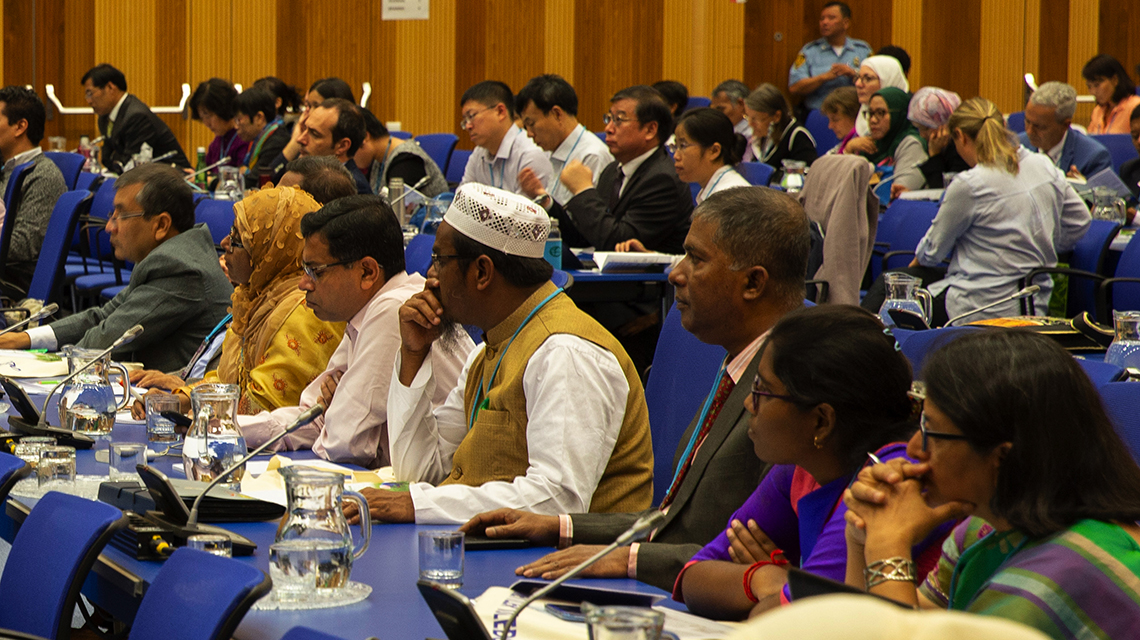The use of radiation in improving crop varieties offers an effective means of adapting agricultural crops to changing weather conditions, while also increasing yields to feed a growing population, agreed speakers at a session at the International Symposium on Plant Mutation Breeding and Biotechnology yesterday.
Rice is the staple crop in many countries, particularly in Asia, but yields of traditional varieties have fallen in recent years due to changing weather patterns, including higher temperatures, severe droughts, floods, salinity and diseases, coupled with more erratic rainfall.
Irradiation induces changes in the DNA and speeds up the natural process of mutation in plants, increasing the diversity in crop varieties available to farmers. These new varieties possess favourable traits – some including stronger climate resilience and higher yields.
Speakers from several countries shared success stories on the contribution and impact of mutant varieties developed through irradiation on agricultural productivity and therefore food security.

